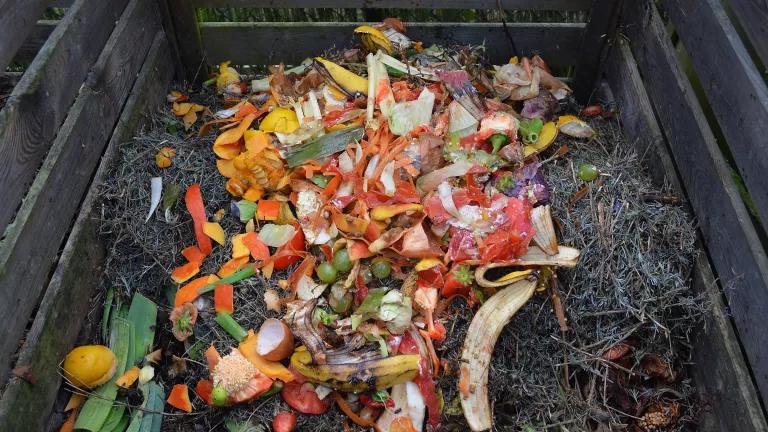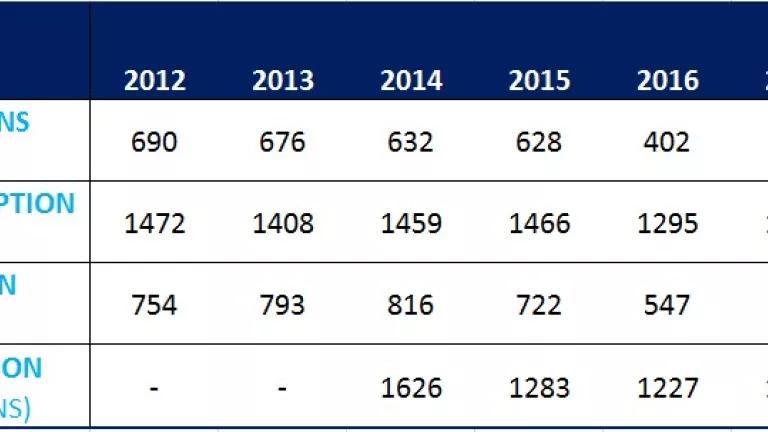Municipal Compost Is Key for Regenerative Farms and Sustainable Cities
Compost is a physical reminder that soils, farms, and farmers are all part of a larger food system inextricably linked with municipalities and urban areas

Ensuring that source-separated organics from cities and towns are recycled back to farms can help ensure that the valuable nutrients inside do not go to waste.
Pixabay
This World Soil Day, let’s take a moment to appreciate the ways that soil connects, underlies and supports our cities and farms, especially in the face of climate change. Soil’s spongy organic matter helps drain and store water for plant use, providing up to 90% of crop water needs globally. Regenerative and organic farming systems aimed at improving the resilience of our food systems seek to increase soil organic matter, not just for its water-holding ability but also because it stores carbon and nutrients that help crops grow, improves soil structure and quality to reduce erosion, and supports the living network of soil organisms that purify our water and break down pollutants. While there are many ways to increase soil organic matter, there is one practice in particular that has an impressive track record of success, and is a physical reminder that soils, farms, and farmers are all part of a larger food system inextricably linked with municipalities and urban areas—adding compost.

The process of wasted food composting involves several steps. Source-separation of plastics and metal from organics happens before collection by the consumer.
Taken from EPA Report EPA/600/R-23/065 "From Field to Bin: The Environmental Impact of US Food Waste Management Pathways"
Not all compost is created equal. Compost is both a product and process, made of partially decomposed organic material in a range of different forms, each of which has its own unique qualities and can be tailored to the organic feedstock available (such as in vineyards) and to farmer’s needs. For example, compost produced from sewage sludge often has more nutrients such as nitrogen and phosphorus, but can also contain heavy metals, antibiotics, and other contaminants. Compost made from source-separated organic materials from municipal solid waste—that is, compost that is made from leaves, grass clippings, and food scraps that has been separated from plastics, glass, and metals by the consumer before collection—can have lower nitrogen content, but also has generally fewer contaminants. This range of feedstocks and qualities can lead to widely varying levels of nutrients, contamination, and prices. Distinguishing between these different compost types and their ideal applications is important when discussing potential benefits for farmers, given that farmers cite poor quality and price as the major obstacles to compost adoption.

Separating glass, plastic and metal from organics before disposing can help ensure that the resulting compost is of higher quality, and has less contaminants.
Matt Nager for NRDC
Prioritizing compost production from source-separated organics is one way to address these obstacles. Separating organic waste from potential contaminants, such as plastic, before collection is one of the most effective ways to improve municipal compost quality and improve its marketability. Investing in composting facilities in major municipal areas can help meet demand while reducing compost prices. For example, if 75% of all organic waste in California’s cities were converted to compost, 99.9% of it could be applied to farmland within 56 miles of those cities, keeping transport costs low. Diverting those organic wastes from entering landfills can also provide massive GHG emission savings, given that up to 58% of landfill methane emissions are due to food waste.
Compost from source-separated municipal organics holds great value as a fertilizer since it adds carbon, nitrogen, phosphorus, sulfur, and a host of other nutrients to the soil simultaneously. These nutrients are often locked inside organic material, so they are released to plants more slowly as soil microorganisms break them down. While source-separated organic compost may not be a 1:1 replacement for nitrogen fertilizer, it can supply large amounts of plant-available phosphorus, increase micronutrient content in young plants, and raise the pH of the soil. Combining compost application with practices such as cover cropping can supplement nitrogen addition (if you add legumes), reduce excess nitrogen and phosphorus runoff, and help soil carbon be stored for longer periods of time deeper in the soil.

Compost develops at Teter Organic Farm and Retreat Center in Noblesville, Indiana June 21, 2022.
NRCS photo by Brandon O’Connor
Compost can also provide a boost to soil biology depending on the feedstock. A single compost application can increase both the number and activity of soil microbes, and these effects can persist for multiple years. While the specific impact of source-separated municipal organic compost on soil biodiversity has not been fully explored, there is some evidence that this type of compost contains microbial populations that can outcompete common pathogens such as fusarium and plant parasitic nematodes that can cause billions of dollars in crop losses. Source-separated municipal compost can also lock heavy metals or contaminants present in the soil away from microbes, making it an attractive option for the remediation of metal-contaminated industrial and urban soils.
Municipal compost is a reminder that soils, farms, and farmers are all part of a larger food system that is inextricably linked with municipalities and urban areas; farms support cities, but cities also support farms. If we are imagining the type of transformative change to our food systems that is needed to stave off the worst effects of climate change, making more compost is not a bad place to start. This is why local and municipal movement on compost production is so important. Taking steps to prevent food waste is the most effective way to reduce GHG emissions related to food waste, but it is also important to make sure that the valuable nutrients and carbon locked inside food waste are recycled back to farms through compost production. Federal agencies such as the NRCS have recognized the potential value of compost addition to soils, but more work can be done to remove obstacles for farmers. Prioritizing incentives for source-separated municipal compost in the Farm Bill can help to remove price barriers, while incentivizing the adoption of suites of regenerative farming practices such as compost and cover crops together can help to alleviate potential negative effects on yield. In order to ensure there are robust markets for finished compost, it’s important to have policies around the procurement and use of compost in municipal contexts, and to promote municipal composting initiatives. This World Soil Day, let’s take a moment to appreciate the many ways that compost brings together our communities and farms, and celebrate the soil that supports our societies.




